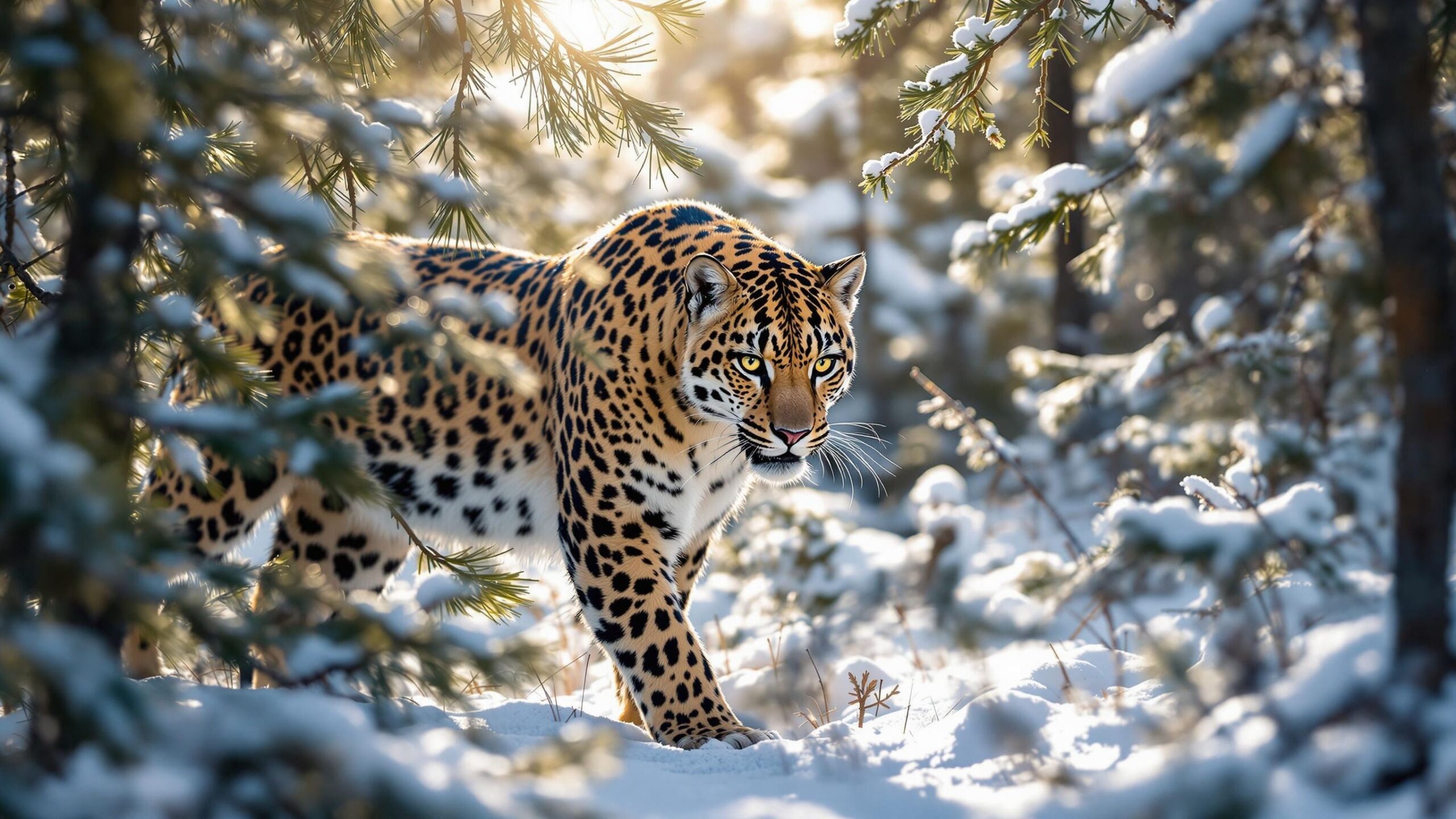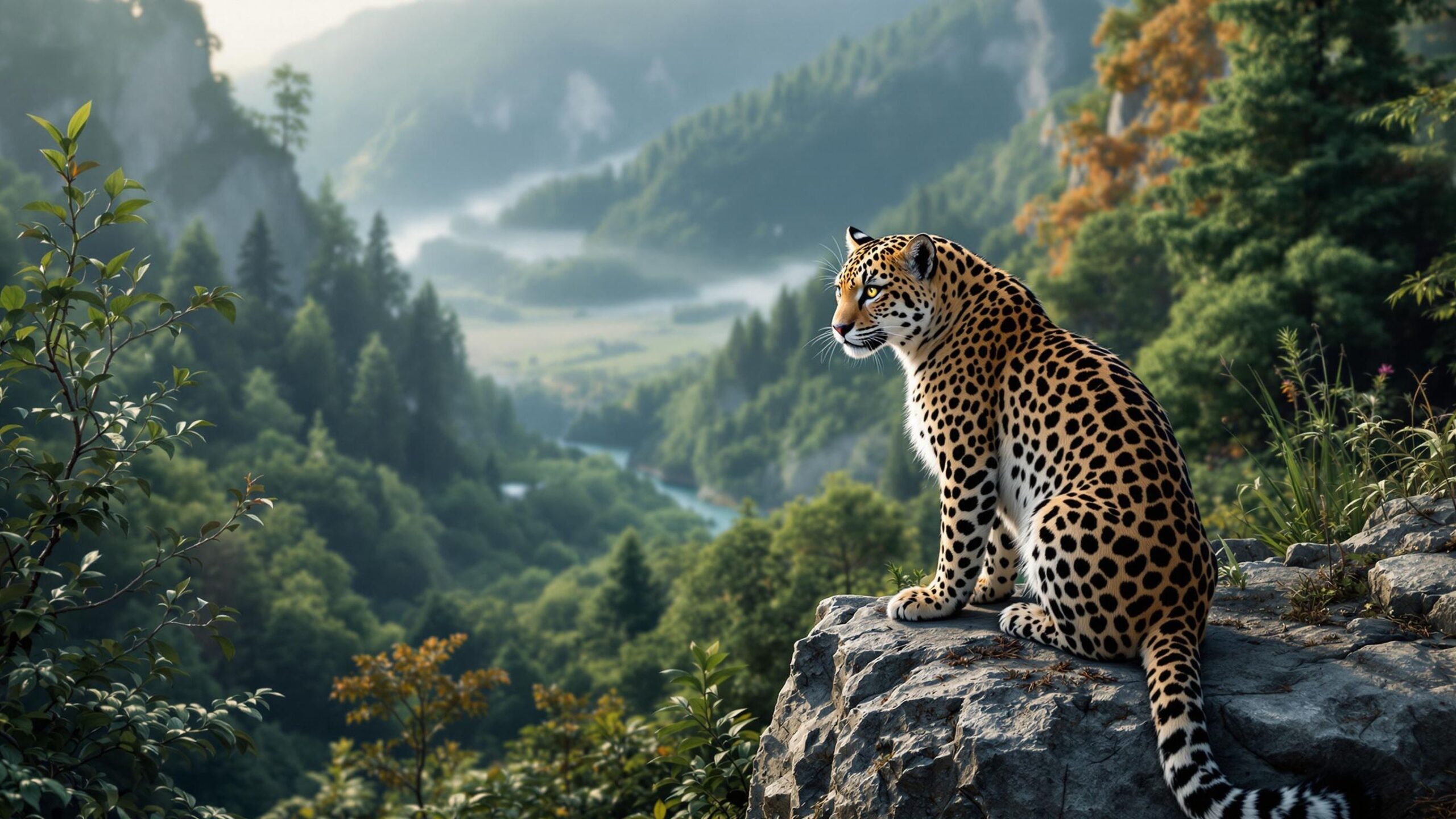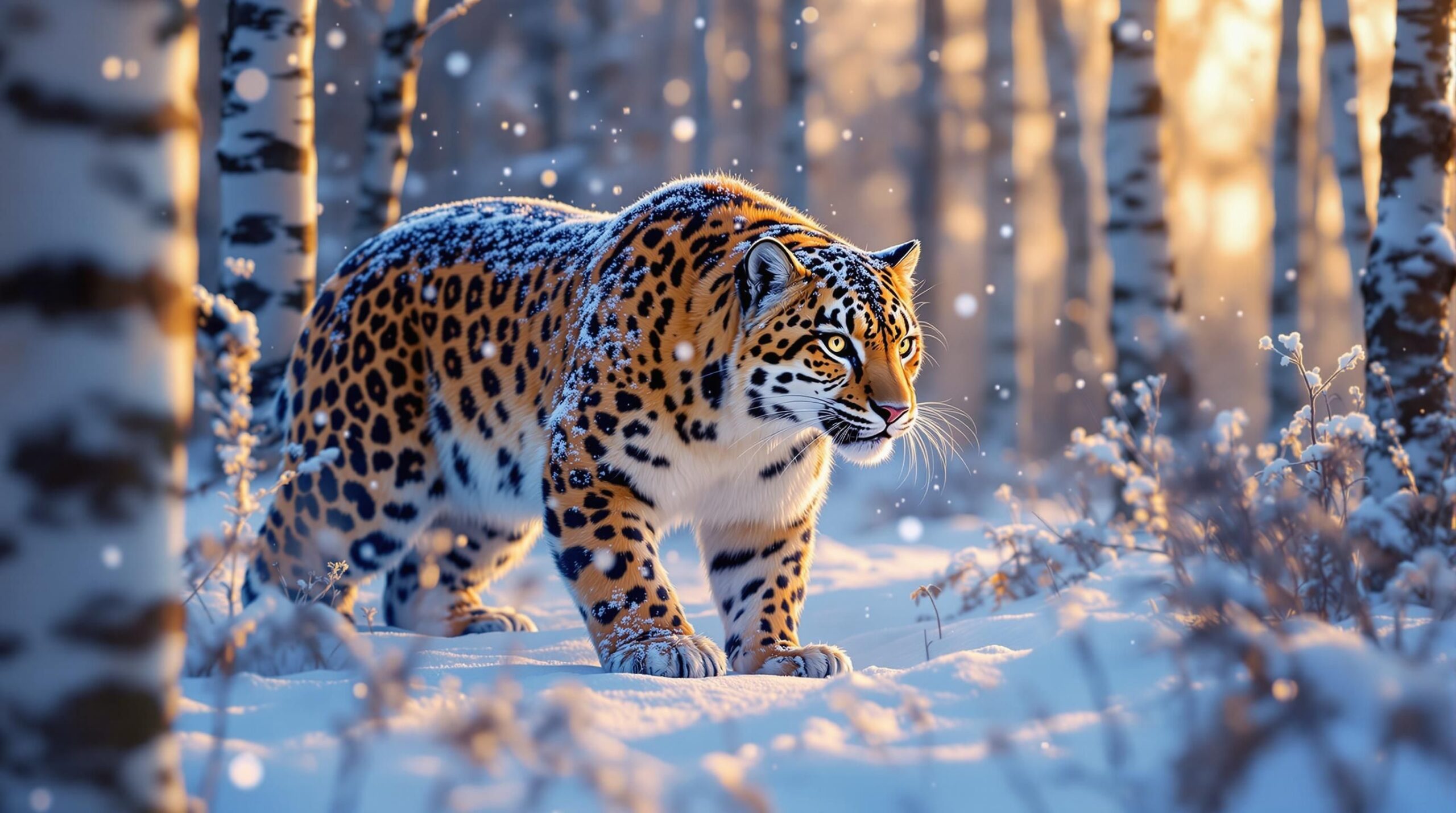The Amur Leopard: A Ghost of the Forest
In the snow-laced forests of the Russian Far East roams one of the most elusive and critically endangered big cats on Earth—the Amur leopard (Panthera pardus orientalis). Known for its ghost-like ability to vanish into the wilderness, this rare subspecies of leopard is not just a symbol of the wild’s resilience but also evidence of nature’s incredible beauty and adaptability.
The Amur leopard is a subspecies of the leopard, a species found in a wide variety of habitats across Africa and Asia. However, what sets the Amur leopard apart is its incredible ability to survive—and thrive—in some of the harshest, coldest forests in the world. With fewer than 150 individuals left in the wild, the Amur leopard’s story is not just one of survival, but also of hope, determination, and a deepening relationship between humans and the natural world.
A Creature of Cold Climates
Unlike its African cousins that bask in sun-scorched savannas, the Amur leopard inhabits the temperate forests of the Russian Far East and northeastern China, particularly in the Primorye region. This area is characterized by mountainous terrain, rocky outcrops, and thick underbrush that provides both cover and camouflage. The winters are long and punishing, with snow often covering the ground for months.
To survive such conditions, the Amur leopard has evolved several unique traits. Its long, thick coat, which can grow up to 7.5 centimeters in winter, insulates it against freezing temperatures. This coat is a striking golden-cream color, heavily covered in dark rosettes and spots that are wider and more widely spaced than those of other leopard subspecies. The animal’s legs are also longer, an adaptation that helps it move through deep snow with surprising ease and grace
Masters of Stealth and Solitude
Amur leopards are notoriously solitary and secretive. They are primarily nocturnal, preferring to hunt under the cover of darkness and spend their daylight hours resting in caves, dense thickets, or high vantage points. These cats are supremely stealthy predators, using their keen eyesight, acute hearing, and unmatched camouflage to silently stalk their prey.
Their diet mainly consists of roe deer, sika deer, hares, and wild boar, though they are opportunistic feeders and will take smaller prey when necessary. What makes the Amur leopard especially impressive is its strength-to-size ratio. Despite being one of the smaller big cats—males weigh between 32 to 48 kilograms, and females typically weigh less—they can drag prey much larger than themselves up into trees or dense brush to avoid scavengers. Each individual roams a vast territory—males may control areas up to 500 square kilometers—marking their range with scent and scratch marks on trees. Due to the low density of prey and the territorial nature of these animals, maintaining large expanses of unbroken forest is crucial for their survival.
A Subspecies Hanging by a Thread
The Amur leopard once roamed across a broad swath of eastern Russia, northeastern China, and even the Korean Peninsula. But over the last century, its numbers have plummeted due to habitat loss, poaching, and prey depletion. Logging and agricultural expansion have fragmented their forest home, while illegal hunting for their beautiful pelts has made them a target for poachers.
Perhaps even more threatening than direct killing is the decline in prey species due to human hunting and habitat degradation. Without enough food, even the most cunning predators cannot survive. Additionally, inbreeding—a result of the incredibly small population size—has reduced genetic diversity, making the subspecies more vulnerable to disease and birth defects. In the early 2000s, alarm bells were ringing in the conservation world. Estimates suggested that fewer than 40 Amur leopards remained in the wild—a population so small that extinction seemed almost inevitable.

Turning the Tide: Conservation Efforts
Yet, against the odds, the Amur leopard has staged a fragile but promising comeback, largely due to concerted international conservation efforts. The Russian government, in partnership with NGOs and global wildlife organizations, established the Land of the Leopard National Park in 2012, a vast protected area covering nearly 3,000 square kilometers. This park includes the entirety of the Amur leopard’s known range in Russia, giving it a safe refuge to live, hunt, and reproduce. Anti-poaching measures have been ramped up significantly. Patrols are more frequent, technology like camera traps and GPS tracking has been deployed, and local communities have been engaged to support conservation rather than work against it. Crucially, efforts to reintroduce prey species like deer and boar have improved the food supply.
Captive breeding programs in zoos around the world also play a role in keeping the subspecies alive. These programs maintain genetic diversity and may eventually support reintroduction efforts in suitable wild habitats, especially in northeastern China, where protected corridors are being developed to allow population expansion across borders. In a rare bit of good news for wildlife conservation, the wild population of Amur leopards is now estimated to exceed 120 individuals—still incredibly vulnerable, but a significant increase that offers hope.
From Crisis to Coexistence
One of the most remarkable aspects of the Amur leopard’s story is how it reflects a shifting mindset about conservation. Where once the focus was solely on saving an animal from extinction, there is now a growing understanding that saving species means saving ecosystems—and that humans are part of those systems, not separate from them.
In the Russian Far East and across the border in China, conservationists are working with local farmers, hunters, and communities to promote sustainable land use and wildlife-friendly practices. This includes education initiatives, ecotourism projects that bring revenue to local villages, and programs that compensate farmers for livestock lost to wild predators. Such initiatives are crucial because they build a constituency of people who have a personal stake in the survival of the Amur leopard. It is not enough to protect land; it must be done in a way that supports the people who live there.
Legends, Lore, and Symbolism
Despite its relative obscurity in Western popular culture, the Amur leopard is a powerful symbol in the regions it inhabits. To many indigenous peoples of the Russian Far East, large cats are seen as guardians of the forest, beings that hold spiritual significance and must be respected.
In recent years, the Amur leopard has also become an emblem of global conservation efforts, appearing in documentaries, wildlife campaigns, and even the Olympic Games. The animal’s ghostly beauty, resilience, and rarity have helped capture the public’s imagination in ways that go far beyond its immediate environment. It’s easy to see why. Few animals are as striking as the Amur leopard: those piercing eyes, the soft rosette-covered coat, and the quiet, powerful gait of a creature that knows how to disappear into the trees. It is an animal that inspires awe—not just because it’s rare, but because it’s real, living in the same world as us, though often unseen.
Why It Matters
The loss of any species is a tragedy, but the potential extinction of the Amur leopard would be particularly heartbreaking—not only because of its intrinsic beauty but also because it represents a living connection to the primeval forests of Northeast Asia. Losing the Amur leopard would mean losing a piece of Earth’s biological heritage, a reminder of how wild and mysterious the world once was—and still is, in corners of forest where these cats still tread.
Protecting the Amur leopard means preserving entire ecosystems, ensuring the health of rivers, forests, and the dozens of other species that share its habitat. These include everything from wild boars and deer to birds of prey and ancient tree species. In a sense, saving the leopard is an act of holistic preservation—keeping intact the web of life that sustains not just animals, but humans too.

The Road Ahead
While the story of the Amur leopard has seen heartening progress, the future remains uncertain. Climate change, continued development pressures, and the ever-present threat of poaching mean that ongoing vigilance is essential. Conservation is not a one-time effort but a long-term commitment that requires international cooperation, funding, scientific research, and local engagement.
Researchers are now focusing on expanding the leopard’s range, increasing genetic diversity through careful population management, and restoring ecological corridors between Russia and China. Biologists are also exploring the potential for reintroducing Amur leopards to parts of their historic range in North Korea and other parts of China, though such efforts face political and logistical challenges. Public awareness is also key. The more people know about the Amur leopard, the more pressure there is to protect it. Wildlife documentaries, photography, educational campaigns, and tourism all play a role in turning the spotlight toward a creature that has spent much of its life in the shadows.
Final Reflections: The Beauty of the Wild
There is something profoundly moving about the Amur leopard. It is not just an animal—it is a survivor, a master of stealth, a symbol of nature’s elegance and ferocity. In a world where wild spaces are shrinking, and species are vanishing at alarming rates, the Amur leopard reminds us of what is still possible.
To hear that this animal once stood on the brink of extinction, and now, thanks to human care and cooperation, is making a tentative return, is to be reminded of our capacity for good. It tells us that extinction is not always inevitable, that with effort and empathy, there are second chances. So if you ever find yourself walking through the birch forests of Primorye or the misty mountains of northeast China, keep your eyes open. You probably won’t see an Amur leopard. But if you’re lucky, you might find its tracks in the snow—a whisper of wildness, a promise that nature, when given the space and respect it deserves, can still surprise us.

